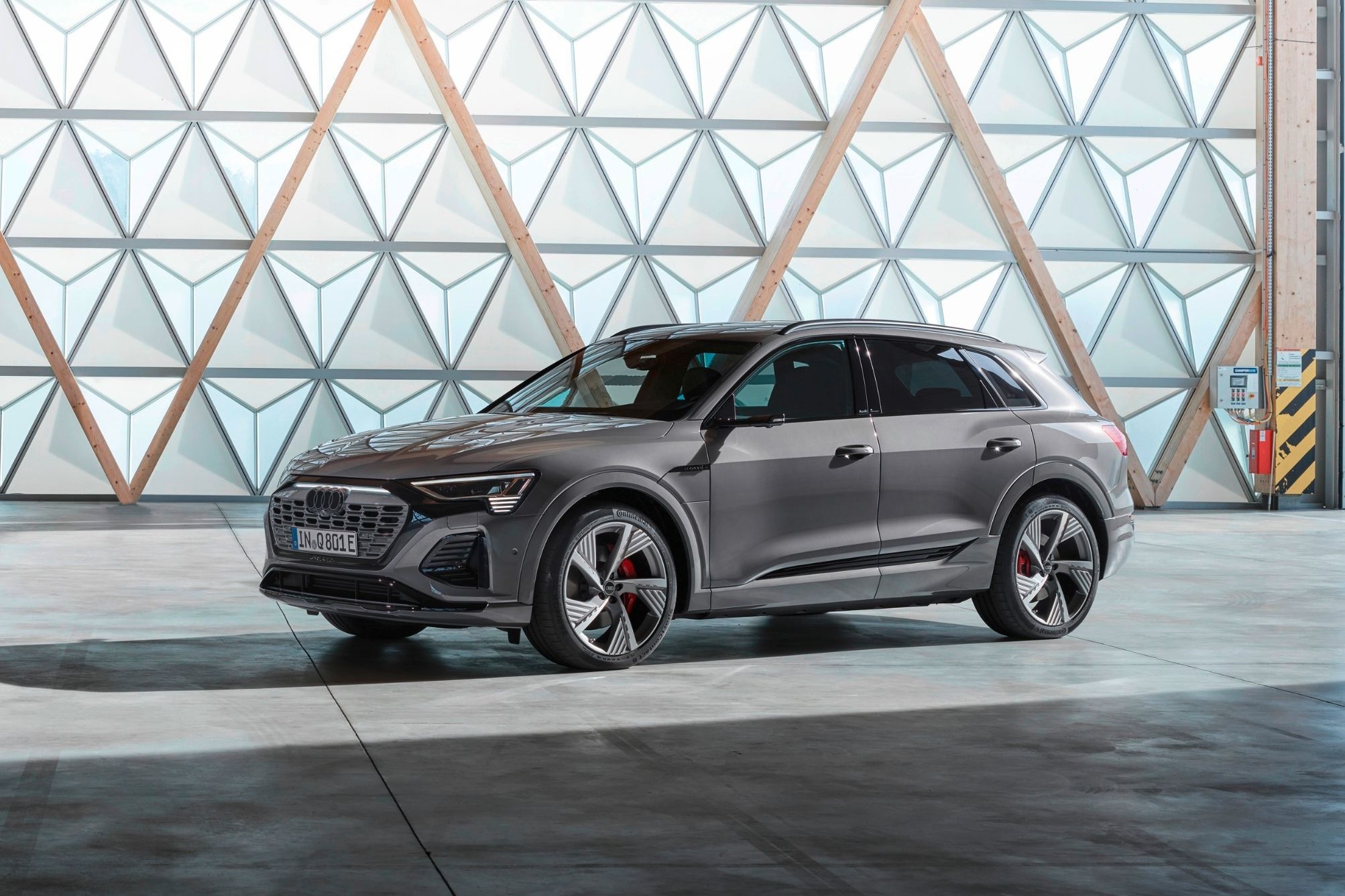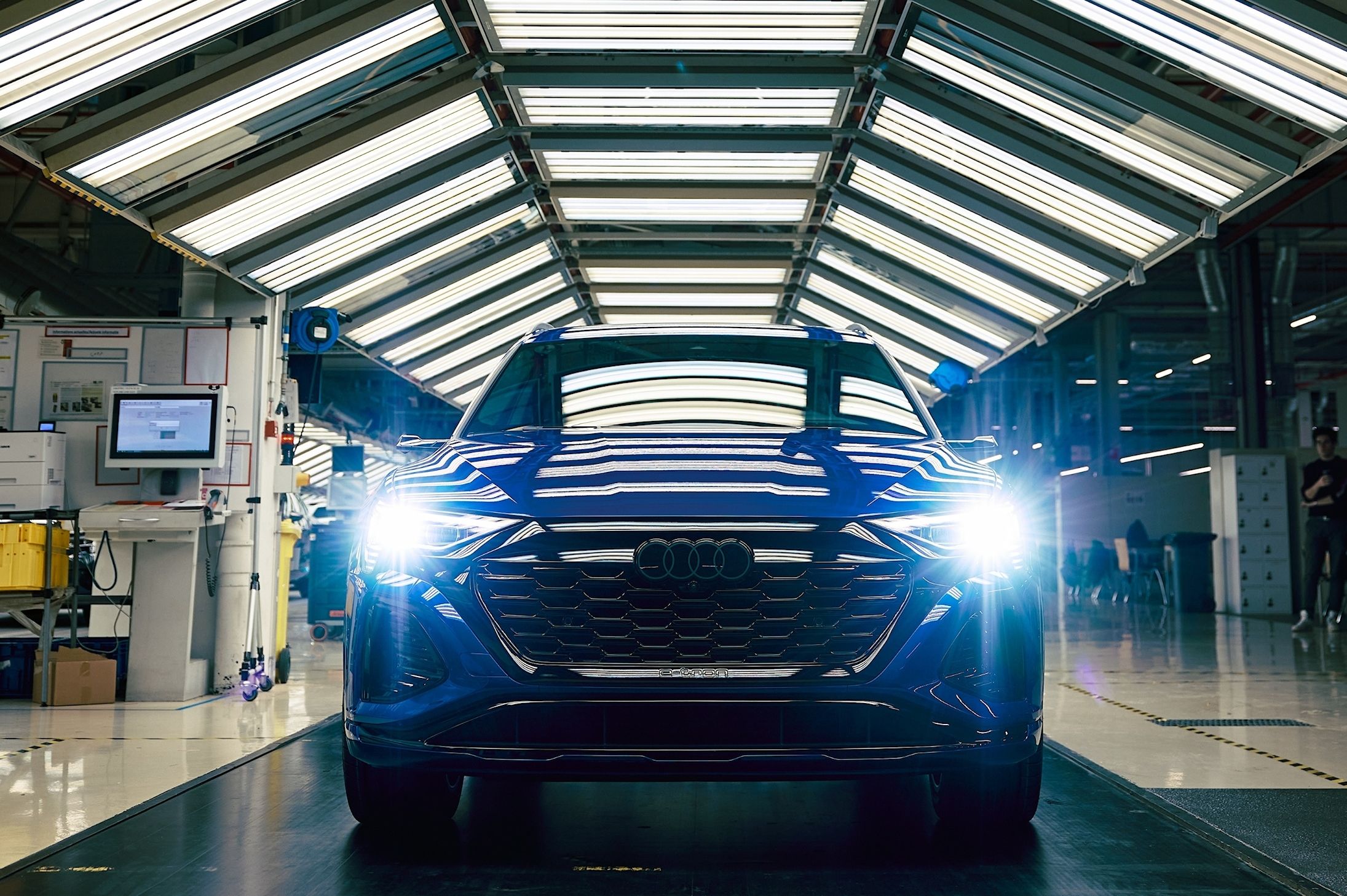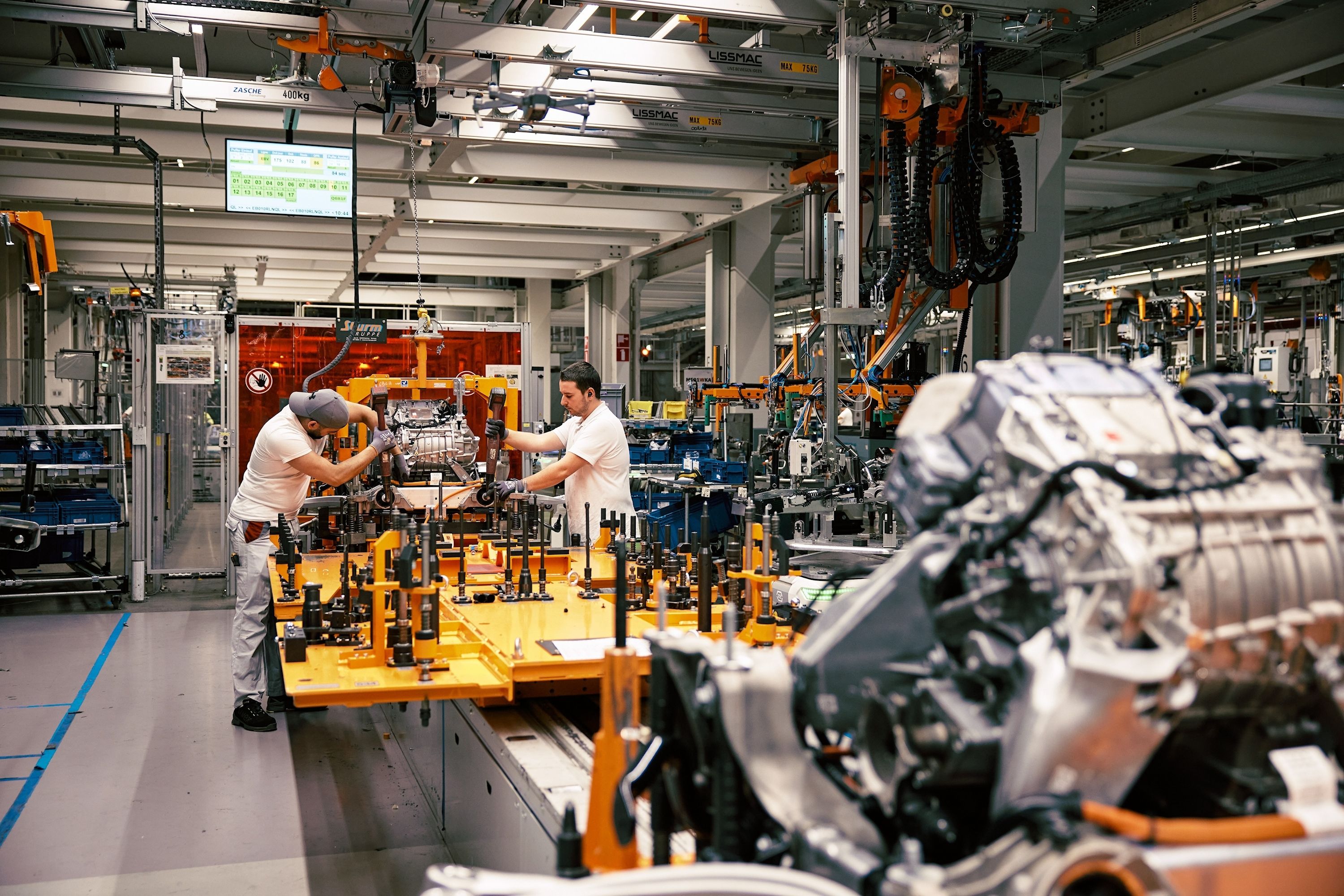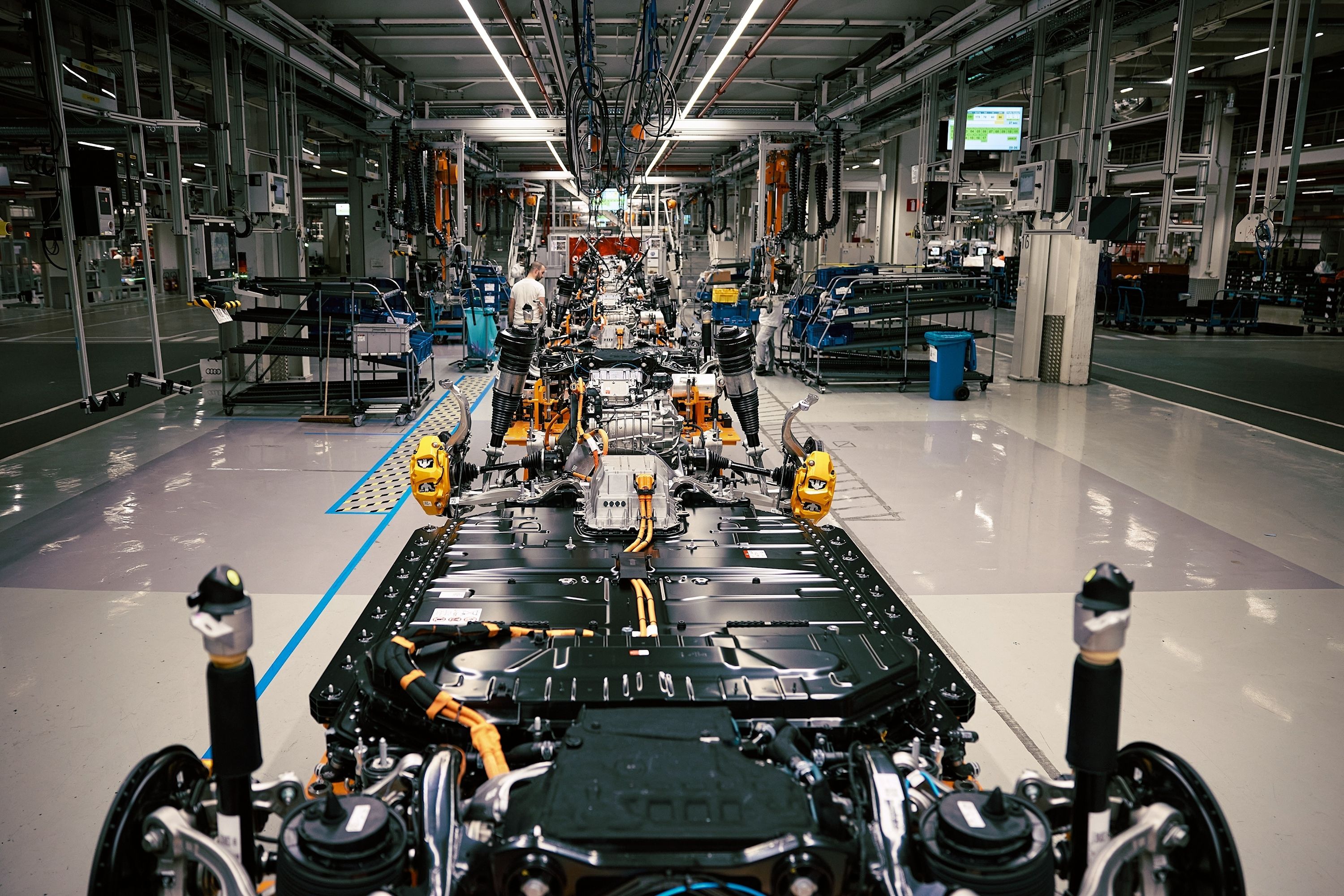
Audi is using one of its smallest plants to set an example for other manufacturing facilities that will soon be building electric vehicles. The plant in Brussels is one of the smallest owned by the Volkswagen Group, yet it was chosen as the main assembly facility for the e-tron, which Audi launched in 2018.
The e-tron name would eventually become an EV designation used on a wide variety of vehicles. Following a recent facelift, the original e-tron SUV is now known as the Q8 e-tron, and the lessons learned from manufacturing it will be implemented across the board. The 3,000 people tasked with assembly also agreed to be teachers. Not just by providing tips to other factory workers but also by telling the bigwigs what does and doesn't work.
The Q8 e-tron debuted in mid-November 2022, and production started a month later in Brussels. Audi used the production break to make several improvements to the assembly line, though none were big enough to count as significant. According to Volker Germann, the CEO of Audi Brussels, it did not change everything but implemented a series of small steps that eventually led to a consequential difference.
A prime example is a part that separates the individual modules in the battery, known as the cage. It's a piece of lattice-shaped aluminum, and at the start of e-tron production, it had to be assembled by hand because Audi's suppliers had nothing like it.
"We [originally] made each cage manually, and we analyzed each cage manually," Germann told Automotive News Europe "But for the man or woman doing that job, it sucks. The whole day, just hundreds of meters of welding aluminum."
Audi Brussels got rid of that tedious job and found ways to make the assembly process cheaper. As the first EV assembly plant, safety was obviously critical. The factory that builds the Q8 e-tron's battery cages is located next door, and it used a temporary "gap filler" before the cells were loaded. The process went down from 0.5 liters to a single drop. The original estimates and filler type were eventually changed, driving costs down.
The German manufacturer was also overly cautious with its factory workers. According to Germann, the employees tasked with battery assembly had to wear special protective gear when they handled the lithium-ion batteries. As you can imagine, a full working day in a factory is already a tough gig without adding additional weight.
"It was too cautious," said Germann. "We didn't need them." The employees that work closely with batteries are still protected, but the regulations are now more closely aligned with the danger levels.
Audi Brussels also recognizes that emissions start with the building process, which is why the cells are now being transported from God in Hungary to Brussels via electric train. "We used to ship them by truck, but switching to the train saves us about 2,600 tons of CO2 per year," said Jan Marls, head of production at Audi Brussels.
Audi changed to a different battery supplier, too. LG Chem was chosen as the original battery supplier, but cells now come from Samsung SDI. Along with the change in supplier comes an improvement in range. So far, Audi has only supplied the Worldwide Harmonised Light Vehicle Test Procedure (WLTP) figure, which is 373 miles.
The WLTP test is more generous than the USA's EPA test cycle, but during the Q8 e-tron press event, Audi stated that it's aware of how vital the 300-mile figure is if it wants to remain competitive.
Audi's current deadline for going all-electric is set for 2033.



